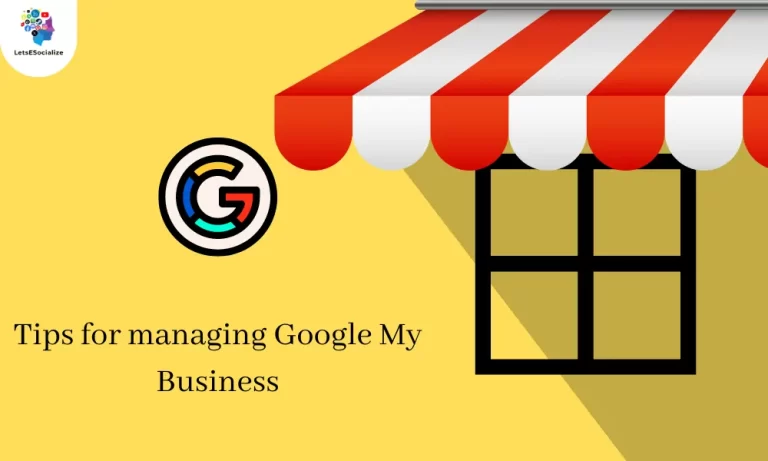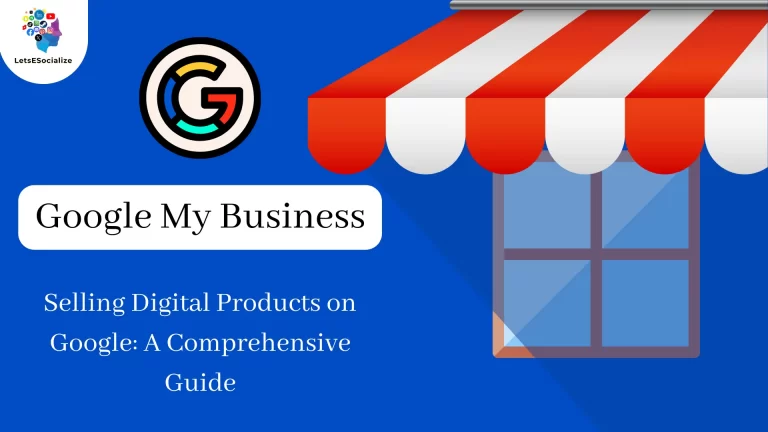Does Google Shopping Help SEO, In the digital age, businesses constantly seek ways to enhance their online visibility and attract more customers. Search engine optimization (SEO) plays a crucial role in this endeavor, but what about Google Shopping? Many wonder whether listing products on Google Shopping can also benefit their SEO efforts. In this comprehensive guide, we’ll delve into the relationship between Google Shopping and SEO to help you understand how these two aspects of online presence intersect.
Table of Contents
Section 1: What is Google Shopping?
Google Shopping is a service offered by Google that allows users to search for and compare products from online stores across the web. It essentially acts as a giant online shopping mall, bringing together products from various retailers in one place. Here’s a breakdown of its key functionalities:
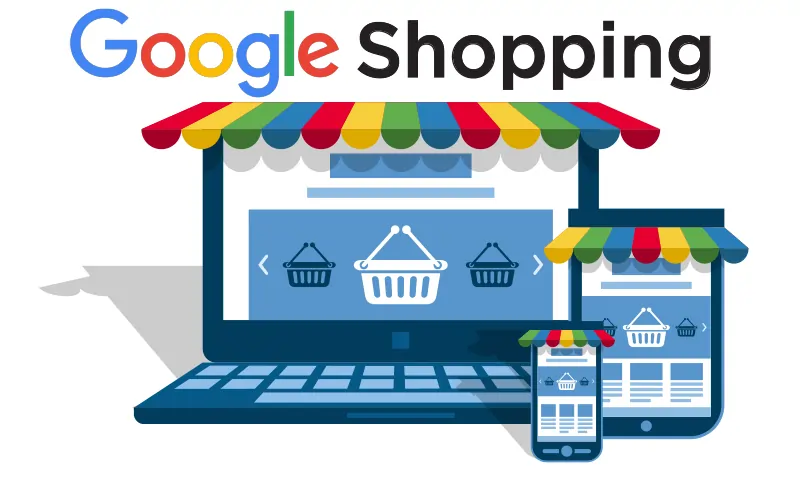
- Product Search: You can search for specific items by name, brand, category, or other filters. Google Shopping uses its powerful search engine technology to find relevant products from a vast database.
- Price Comparison: See product listings from various retailers alongside their prices, allowing you to easily compare prices and find the best deals.
- Product Information: Each product listing typically includes a brief description, image, seller information, and sometimes even reviews. This helps you get a quick overview of the product before visiting the retailer’s website.
- Shopping Tools: Google Shopping offers various tools to refine your search, such as filtering by price range, brand, color, size, and other attributes. This helps you narrow down your options and find products that meet your specific needs.
Who Uses Google Shopping?
- Consumers: It’s a valuable tool for shoppers who want to find the best deals and compare prices before making a purchase online.
- Businesses: Retailers can pay to list their products on Google Shopping, allowing them to reach a wider audience of potential customers.
Benefits of Google Shopping:
- Convenience: It saves time and effort by allowing you to search for products from multiple stores in one place.
- Price Comparison: Easily compare prices and find the best deals.
- Variety: Find a wide range of products from different retailers.
- Product Information: Get a quick overview of products before visiting retailer sites.
Things to Know:
- Google Shopping itself doesn’t sell products directly. It directs you to the retailer’s website to complete your purchase.
- Not all online stores are listed on Google Shopping. Retailers need to sign up and potentially pay to have their products listed.
- It’s important to compare prices and read reviews before making a purchase, as the lowest price might not always be the best option.
Also Read – Is Google Considered a Social Media?
Also Read – 10 Jobs Replaced by AI and 10 That Won’t: A Comprehensive Guide
Section 2: Understanding SEO and Its Importance
Search Engine Optimization (SEO) is the practice of improving the ranking and visibility of your website in search engine results pages (SERPs). When someone types a query into a search engine like Google, SEO helps your website appear higher up in the results, ideally on the first page.
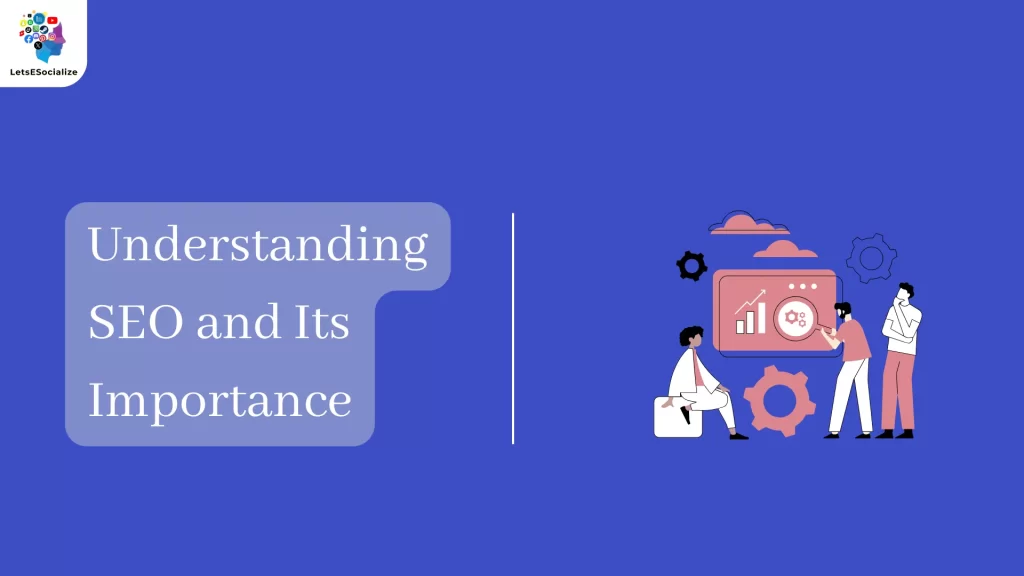
Here’s a breakdown of why SEO is important:
Increased Website Traffic:
- The higher your website ranks in search results, the more likely people are to visit your site. This translates to more potential customers or readers for your content.
Targeted Traffic:
- SEO helps attract visitors who are genuinely interested in what you offer. By optimizing your website for relevant keywords, you can ensure your site shows up when people search for those terms.
Brand Awareness:
- High ranking in search results increases brand awareness and makes your website more recognizable to potential customers.
Credibility and Trust:
- Ranking well on search engines can be seen as a mark of credibility and trust. Users often associate higher-ranking websites with being more authoritative and reliable sources of information.
Cost-Effectiveness:
- Compared to paid advertising, SEO is a more cost-effective way to drive traffic to your website. Once you’ve optimized your website, the benefits can be long-lasting.
Improved User Experience:
- SEO often involves making your website easier to navigate and use. This not only helps search engines understand your site but also provides a better user experience for visitors.
Here’s a quick analogy: Think of SEO like a store on a busy street. If your store is well-lit, has a clear and attractive storefront, and offers products people are looking for, it’s more likely to attract customers. SEO helps your website achieve the same thing in the digital world.
Overall, SEO is a crucial aspect of any online marketing strategy. By optimizing your website for search engines, you can significantly increase your website traffic, and brand awareness, and ultimately achieve your business goals.
Section 3: The Connection Between Google Shopping and SEO
Google Shopping and SEO, while functioning in separate spheres of the online world, can work together to improve your online presence and product visibility. Here’s how:

Increased Visibility:
- Even though Google Shopping isn’t directly part of traditional SEO (focusing on website ranking), well-optimized product listings can appear in the Shopping tab on the search results page (SERP) for relevant searches. This increases the overall visibility of your products alongside organic website listings.
Targeted Traffic:
- Optimizing your product listings with relevant keywords can attract users actively searching for those specific products. This brings targeted traffic directly interested in what you offer, potentially leading to higher conversion rates.
Improved Organic Ranking:
- Google considers various factors for ranking websites, and user engagement is one of them. Suppose your optimized Google Shopping listings lead to more website traffic and user engagement. In that case, it can indirectly send positive signals to Google and potentially improve your website’s overall ranking in organic search results.
Keyword Research:
- SEO practices like keyword research can be highly beneficial for optimizing both your website and Google Shopping listings. By identifying relevant keywords that users search for, you can tailor your product descriptions and titles to improve their ranking in both organic search and Google Shopping searches.
Content Integration:
- High-quality content on your website that elaborates on the products you sell in Google Shopping can further enhance your SEO efforts. Informative content relevant to your products can attract organic traffic and establish your brand as an authority in your field.
Overall, Google Shopping and SEO can be a powerful combination for driving traffic to your online store and increasing product sales. By optimizing both your website and Google Shopping listings, you can reach a wider audience, attract qualified leads, and ultimately achieve your e-commerce goals.
Here are some additional points to consider:
- Rich Product Information: Provide detailed and accurate product descriptions, high-quality images, and clear specifications in your Google Shopping listings. This enhances user experience and can improve click-through rates.
- Customer Reviews: Encourage customer reviews on your website for products listed in Google Shopping. Positive reviews can build trust and incentivize purchase decisions.
- Mobile-Friendliness: Ensure both your website and Google Shopping listings are optimized for mobile devices, as a significant portion of online shopping now happens on smartphones.
By implementing these strategies, you can leverage the strengths of both Google Shopping and SEO to create a robust online presence and achieve success in the ever-growing world of e-commerce.
Section 4: How Google Shopping Impacts SEO
Google Shopping can impact SEO in a few ways, although it doesn’t directly influence your website’s organic ranking in search results. Here’s a breakdown of the potential influence:
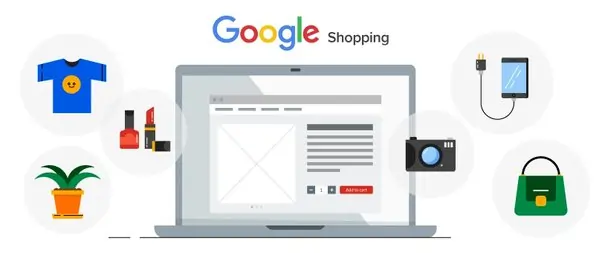
Increased Visibility:
- Google Shopping listings can appear on the coveted Shopping tab and sometimes even within the main organic search results for relevant product searches. This increases the overall visibility of your products beyond just your website ranking, potentially leading to more clicks and traffic.
Targeted Traffic:
- By optimizing your Google Shopping listings with relevant keywords, you can attract users actively searching for those specific products. This brings in targeted traffic that’s already interested in what you offer, potentially leading to higher conversion rates (purchases) on your website.
Indirect SEO Benefits:
- While Google Shopping listings themselves don’t directly impact organic ranking, some SEO benefits can come from user engagement:
- Click-Through Rate (CTR): If well-optimized listings in Google Shopping lead to more clicks to your website, it can send positive signals to Google about your website’s relevance for those search terms. This might indirectly influence your website’s ranking in organic search results.
- Brand Awareness: Increased visibility through Google Shopping can improve brand awareness. When users see your products in shopping searches, they become familiar with your brand, which can lead them to search for your website directly later, impacting organic traffic.
SEO Practices for Google Shopping:
- Keyword Research: Similar to SEO for your website, identify relevant keywords that users search for when looking for your products. Use those keywords in your product titles, descriptions, and other attributes within Google Shopping listings.
- Content Integration: High-quality content on your website that elaborates on the products you sell in Google Shopping can further enhance your SEO efforts. Informative content relevant to your products can attract organic traffic and establish your brand as an authority in your field.
Additional Considerations:
- Rich Product Information: Provide detailed and accurate product descriptions, high-quality images, and clear specifications in your Google Shopping listings. This enhances user experience and can improve click-through rates from the Shopping tab to your website.
- Customer Reviews: Encourage customer reviews on your website for products listed in Google Shopping. Positive reviews can build trust and incentivize purchase decisions, potentially leading to more conversions.
- Mobile-Friendliness: Ensure both your website and Google Shopping listings are optimized for mobile devices, as a significant portion of online shopping now happens on smartphones.
In Conclusion:
Google Shopping and SEO can be a powerful combination for driving qualified traffic to your online store and increasing product sales. By optimizing both your website and Google Shopping listings, you can leverage the strengths of each platform to maximize your online presence and achieve success in e-commerce.
Remember, Google Shopping serves as a powerful product display platform, while SEO focuses on improving your website’s organic ranking in search results. However, both can work together to create a well-rounded online strategy for your business.
Section 5: Tips for Optimizing Your Google Shopping Listings for SEO
Here are some tips for optimizing your Google Shopping listings for SEO to improve your online presence and product visibility:

Keyword Targeting:
- Research: Conduct thorough keyword research to identify relevant keywords and search terms that users employ to find products like yours. Utilize keyword research tools like Google Keyword Planner and analyze competitor listings to discover relevant terms.
- Title Optimization: Incorporate target keywords strategically throughout your product titles. However, prioritize clarity and avoid keyword stuffing. Aim for titles that accurately describe the product while incorporating relevant keywords.
- Description Optimization: Craft compelling and informative product descriptions that include relevant keywords naturally. Highlight key product features, benefits, and specifications. Utilize bullet points and rich content to enhance readability.
Product Information:
- Accuracy and Completeness: Ensure all product information in your listings is accurate, detailed, and up-to-date. Include essential details like size, color, material, model number, and other relevant specifications.
- High-Quality Images: Visuals are crucial in online shopping. Use high-resolution, clear product images from multiple angles to showcase the product effectively. Include close-up shots to highlight details and consider 360-degree views if applicable.
- Mobile-Friendly Images: With the rise of mobile shopping, ensure your product images are optimized for mobile devices. They should load quickly and display well on smaller screens.
Feed Optimization:
- Product Categories: Categorize your products accurately within the Google Shopping feed using relevant product categories and subcategories. This helps Google understand your products better and display them in appropriate searches.
- Negative Keywords: Utilize negative keywords to exclude irrelevant searches from triggering your product listings. This helps ensure your products appear only in searches where they are genuinely relevant.
Website and User Experience:
- Landing Page Relevance: Ensure the landing pages linked to your Google Shopping listings accurately reflect the advertised product and provide a positive user experience. The landing page content should be consistent with the information in the Shopping listing.
- Mobile-Friendly Website: In today’s mobile-centric world, ensure your website is mobile-friendly and offers a seamless user experience across all devices. This is crucial, as many users might click from your Google Shopping listings to your website to complete a purchase.
- Fast Loading Speeds: Optimize your website’s loading speed. Slow loading times can significantly hurt your conversion rates and bounce rate, impacting both SEO and overall sales.
Additional Tips:
- Customer Reviews: Encourage customer reviews on your website for products listed in Google Shopping. Positive reviews can build trust, improve click-through rates, and potentially lead to more conversions.
- Promotions and Offers: Consider highlighting promotions and special offers within your Google Shopping listings to grab user attention and incentivize clicks.
- Stay Updated: Keep up-to-date with the latest Google Shopping best practices and algorithm changes. Google frequently updates its guidelines and algorithms, so staying informed can ensure your listings remain optimized for discoverability.
By implementing these optimization tips, you can significantly improve the visibility and performance of your Google Shopping listings. Remember, Google Shopping acts as a powerful product display platform, while SEO works on improving your website’s organic ranking. However, when used strategically together, they can create a well-rounded online strategy to boost your online presence, drive qualified traffic to your website, and ultimately increase product sales.
Section 6: Common Myths and Misconceptions About Google Shopping and SEO
Here are some common myths and misconceptions surrounding Google Shopping and SEO:
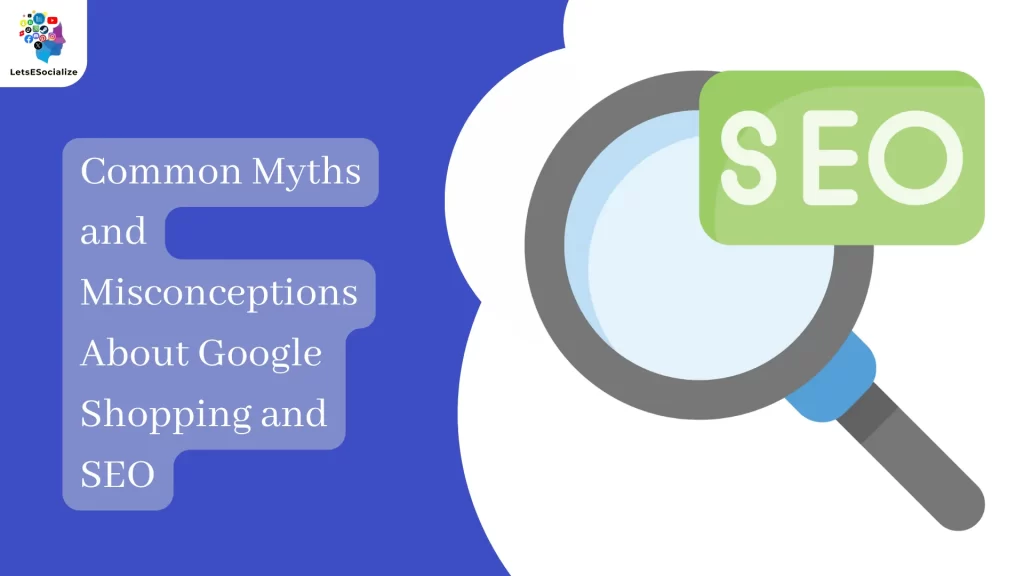
Myth 1: Google Shopping directly improves your website’s organic ranking.
- Reality: Google Shopping listings themselves don’t directly impact your website’s organic ranking in search results. However, there can be indirect benefits:
- Increased website traffic from Shopping clicks can send positive signals to Google about your website’s relevance, potentially influencing organic ranking over time.
- Improved brand awareness through Shopping visibility can lead users to search for your website directly later, boosting organic traffic.
Myth 2: You only need to focus on keywords in your website content for SEO and neglect Google Shopping listings.
- Reality: Keyword research is crucial for both SEO and Google Shopping optimization. Include relevant keywords in your product titles, descriptions, and other attributes within Google Shopping listings to improve their ranking within the Shopping tab and potentially organic searches.
Myth 3: Google Shopping requires a significant investment to be successful.
- Reality: While paid advertising options exist within Google Shopping, you can still achieve good results with organic listings. By optimizing your product information, and images, and targeting relevant keywords, you can improve the visibility of your free listings.
Myth 4: Google Shopping is only for large retailers and e-commerce giants.
- Reality: Google Shopping can be a valuable tool for businesses of all sizes. It allows you to showcase your products to a vast audience of potential customers actively searching for similar products.
Myth 5: Once you optimize your Google Shopping listings, you can set it and forget it.
- Reality: The online landscape is constantly evolving. Keep up-to-date with the latest Google Shopping best practices and algorithm changes to ensure your listings remain optimized for discoverability. Additionally, monitor competitor listings and adapt your strategies accordingly.
Myth 6: Google Shopping is a replacement for SEO.
- Reality: Google Shopping and SEO serve different purposes. Google Shopping focuses on product display within the Shopping platform, while SEO works on improving your website’s organic ranking in search results. However, they can be a powerful combination when used strategically to enhance your overall online presence.
By understanding these common myths and misconceptions, you can approach Google Shopping and SEO effectively to maximize their benefits for your online store. Remember, a well-rounded strategy that leverages both platforms can significantly improve your product visibility, drive qualified traffic, and ultimately lead to increased sales.
Section 7: Case Studies: Success Stories of Businesses Leveraging Google Shopping for SEO
Unfortunately, due to the dynamic nature of search results and the privacy policies of some companies, it can be challenging to find publicly available, verifiable case studies with exact data on how businesses leveraged Google Shopping for SEO.

However, I can provide you with some general success stories that illustrate the potential benefits of using Google Shopping in conjunction with SEO principles:
Scenario 1: Increased Brand Awareness and Organic Traffic
- A small, family-owned sporting goods store optimizes its Google Shopping listings with high-quality product images, detailed descriptions, and relevant keywords.
- While their website might not rank on the first page for every search term, their optimized Google Shopping listings start appearing in the Shopping tab and sometimes even organic results for relevant searches.
- This increased visibility leads to more users clicking on their listings and visiting their websites. Even if they don’t convert right away from the Google Shopping click, some users might remember the brand name and search for the store directly later, boosting organic traffic.
Scenario 2: Targeted Traffic and Improved Conversion Rates
- An online retailer selling handmade furniture optimizes their Google Shopping listings with specific keywords related to the unique styles and materials they offer.
- By targeting long-tail keywords (more specific search phrases), they attract users who are genuinely interested in the type of furniture they sell.
- This targeted traffic from Google Shopping listings leads to a higher click-through rate (CTR) and potentially a better conversion rate (purchases) on their website compared to generic traffic sources.
Scenario 3: Combining SEO and Google Shopping for Holistic Growth
- A company selling outdoor equipment optimizes both its website content and Google Shopping listings for relevant keywords.
- Their website content provides informative blog posts and buying guides related to the products they sell in Google Shopping.
- This combination attracts organic traffic through SEO while also showcasing their products effectively through Google Shopping, potentially leading to increased brand awareness, qualified website traffic, and conversions.
Key Takeaways:
While specific data might be limited, these scenarios highlight the potential benefits of using Google Shopping strategically:
- Increased visibility for your products beyond just organic website ranking.
- Attracting targeted traffic that’s already interested in what you offer.
- Potentially improving organic ranking and brand awareness over time.
- Increased website traffic and potentially higher conversion rates.
Remember, success comes from a well-rounded approach. By combining SEO best practices for your website with optimized Google Shopping listings, you can create a powerful online presence that drives traffic, increases sales, and helps your business thrive.
Also Read – Jeff Bezos Reclaims Title as World’s Richest Person, Elon Musk Drops to Second
Also Read – Former Twitter CEO Parag Agrawal 3 Other Employees Sue Elon Musk for $128 Million
Section 8: Conclusion: Maximizing Your Online Visibility with Google Shopping and SEO
In today’s competitive online landscape, maximizing your online visibility is crucial for success. Google Shopping and SEO, while functioning in separate spheres, can work together to create a powerful strategy for boosting your online presence and product discoverability.
Recap of Benefits:
- Increased Visibility: Google Shopping listings can appear in the Shopping tab and potentially organic search results, showcasing your products to a wider audience beyond just your website’s ranking.
- Targeted Traffic: Optimize your listings with relevant keywords to attract users actively searching for what you offer, leading to potentially higher conversion rates.
- Improved SEO (Indirectly): Increased website traffic from Google Shopping clicks and brand awareness can send positive signals to Google, potentially improving your website’s organic ranking over time.
Strategies for Success:
- Keyword Research: Conduct thorough keyword research for both your website content and Google Shopping listings to identify relevant search terms.
- Optimized Listings: Create compelling and informative product descriptions with relevant keywords in your Google Shopping listings. Include high-quality images from multiple angles.
- Mobile-Friendliness: Ensure both your website and Google Shopping listings are optimized for mobile devices, as a significant portion of online shopping happens on smartphones.
- Content Integration: High-quality website content related to your products can enhance SEO efforts and establish your brand as an authority.
Remember:
- Google Shopping focuses on product display within the Shopping platform, while SEO works on improving your website’s organic ranking in search results. They are complementary strategies, not replacements.
- Regularly monitor Google Shopping best practices and algorithm updates to keep your listings optimized.
- Track your performance and adapt your strategies based on data and competitor analysis.
By effectively combining Google Shopping and SEO, you can create a robust online presence that attracts qualified traffic, drives sales, and positions your business for long-term success in the ever-evolving world of e-commerce.
Conclusion:
In conclusion, Google Shopping can indeed play a significant role in enhancing your website’s SEO performance. By optimizing your product listings and leveraging the platform’s features effectively, you can improve your online visibility and attract more organic traffic. However, it’s essential to approach Google Shopping as a complementary aspect of your overall SEO strategy rather than a standalone solution. By integrating Google Shopping with traditional SEO practices, you can maximize your chances of success in the competitive online marketplace.



